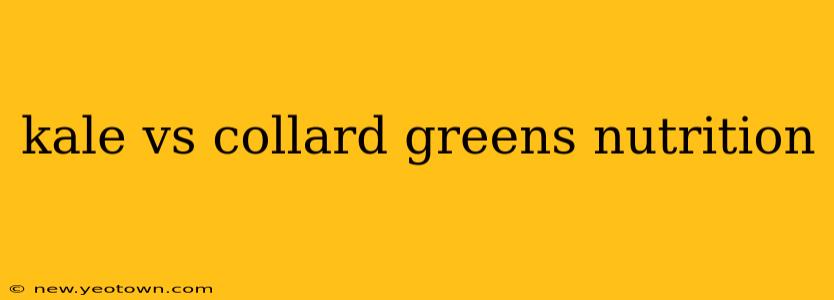For years, kale has reigned supreme in the leafy green vegetable kingdom, boasting a reputation as a nutritional powerhouse. But collard greens, a close relative, quietly simmer in the background, often overlooked. This article dives deep into the nutritional battle between these two powerhouses, exploring their similarities and differences to help you make informed choices for your diet. We’ll settle the score once and for all: Kale vs. Collard Greens – which truly reigns supreme?
Our journey begins in a bustling farmer's market, where vibrant green leaves beckon from overflowing baskets. The air is thick with the earthy scent of freshly harvested produce, a testament to nature's bounty. Among the kale and collard greens, it's easy to see their family resemblance, yet subtle distinctions hint at differences beneath the surface.
Kale's Nutritional Profile: A Champion's Stats
Kale, with its crinkled leaves and slightly bitter taste, has earned its place as a superfood. It’s packed with vitamins, minerals, and antioxidants. A single cup of raw kale provides a significant amount of Vitamin K, Vitamin A, Vitamin C, and various minerals including calcium and potassium. Its high fiber content aids digestion, while its potent antioxidants help fight against cell damage.
Collard Greens: The Underdog's Strength
Collard greens, often mistaken for a type of cabbage, possess a similar nutritional profile to kale but with some key variations. They boast an impressive array of vitamins and minerals, notably Vitamin A, Vitamin C, and Vitamin K. Similar to kale, they are rich in fiber and antioxidants. But the real surprise? Collard greens often contain even higher levels of certain nutrients, such as Vitamin A and folate, than kale.
What are the key differences between kale and collard greens?
This is a crucial question, and the answer isn't as simple as one being "better" than the other. It's more about personal preference and dietary needs. Let's break it down:
Nutritional Differences: A Detailed Comparison
While both are nutrient-rich, their vitamin and mineral content varies slightly. For example, collard greens tend to have higher levels of folate and Vitamin A, while kale often boasts more Vitamin K and calcium. This doesn't mean one is superior; it simply means they offer slightly different nutritional benefits.
Texture and Taste: A Matter of Preference
Here's where personal preference truly comes into play. Kale has a more pronounced, slightly bitter taste and a firmer texture, making it ideal for salads or chips. Collard greens, on the other hand, have a milder flavor and a more tender texture, lending themselves beautifully to stews and soups.
Cooking Methods: Adaptability Reigns Supreme
Both kale and collard greens offer versatility in the kitchen. Kale can withstand higher heat and holds its shape well when sautéed or roasted. Collard greens, being more delicate, often benefit from simmering or braising to achieve optimal tenderness.
Are collard greens healthier than kale?
There's no definitive answer to this question. Both are incredibly healthy, offering a wealth of vitamins, minerals, and antioxidants. The "healthier" choice depends on your individual needs and dietary preferences. If you need a higher dose of folate, collard greens might slightly edge out kale. Conversely, if you're focused on Vitamin K, kale could be your better bet.
Which is better for weight loss: kale or collard greens?
Both kale and collard greens are low in calories and high in fiber, making them excellent additions to a weight-loss diet. The fiber content promotes satiety, helping you feel full for longer. The slight differences in calorie and nutrient content are negligible in the context of weight loss. The key is to incorporate either vegetable into a balanced, calorie-controlled diet.
Final Verdict: It's a Tie!
The “kale vs. collard greens” debate isn't a competition; it's a celebration of two incredibly nutritious leafy green vegetables. Both offer significant health benefits. The best choice depends on your personal taste preferences, dietary goals, and the specific nutrients you're looking to boost in your diet. Enjoy the diversity and incorporate both into your meals for a truly powerful nutritional punch!

